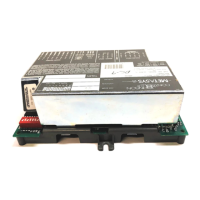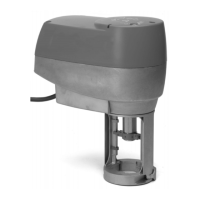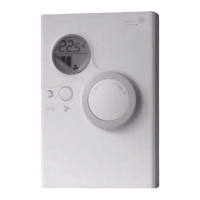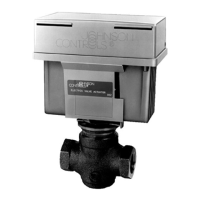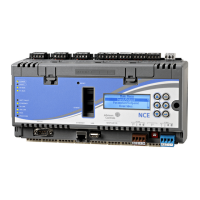LN Application Specific, Remote I/O, and Free Programmable Controllers Installation Instructions
14
Wire Type Check that the wire type agrees with the specification of the LN-Series
Network Communications and Interface Guide (LIT-1201253) or Junction Box
and Wiring Guideline for Twisted Pair LONWORKS Networks.
Network Wiring Problem Check that the wire connections are correct.
Absent or Incorrect Network Termination Check the termination(s). Incorrect or broken termination(s) make the
communication integrity dependent upon a controller's position on the
network.
Extra Capacitance Ensure no extra capacitance is connected to the network other than the
standard FTT circuit, and a maximum of a 3 meter stub (in bus topology).
Number of Devices on Network Segment
Exceeded
The number of controllers on a channel should never exceed 64. Use a router
or a repeater in accordance with L
ONWORKS LN-Series Network
Communications and Interface Guide (LIT-1201253) or Junction Box and
Wiring Guideline for Twisted Pair L
ONWORKS Networks.
Network Traffic Query node statistic to check errors.
Use a
LONWORKS protocol analyzer to check network traffic.
Hardware input is not reading the correct value.
Input Wiring Problem Check that the wiring is correct according to this manual and according to the
peripheral device's manufacturer.
Open Circuit or Short Circuit Using a voltmeter, check the voltage on the input terminal. A short circuit has a
0 V value and an open circuit shows approximately 5 V.
Configuration Problem Check the configuration of the input using the device configuration plug-in or
wizard. Refer to the device’s user guide for more information.
Over-Voltage or Over-Current at an Input An over-voltage or over-current at one input can affect the reading of other
inputs. Respect the allowed voltage/current range limits of all inputs. See
Technical Specifications
.
Hardware output is not operating correctly.
Fuse Has Blown (auto-reset fuse) Disconnect the power and output terminals. Wait a few seconds to allow the
auto-reset fuse to cool down. Check the power supply and the output wiring.
Reconnect the power.
Output Wiring Problem Check that the wiring is correct according to this manual and according to the
device's manufacturer.
Configuration Problem Using the device configuration wizard (LN-GPI), check the configuration of the
output. Refer to the device's user guide for more information.
0 to 10 V Output, 24 VAC Powered
Actuator Is Not Moving
Check the polarity of the 24 VAC power supply connected to the actuator
while connected to the device. Reverse the 24 VAC wire if necessary.
Table 2: Troubleshooting (Part 2 of 2)
Problem Possible Solution

